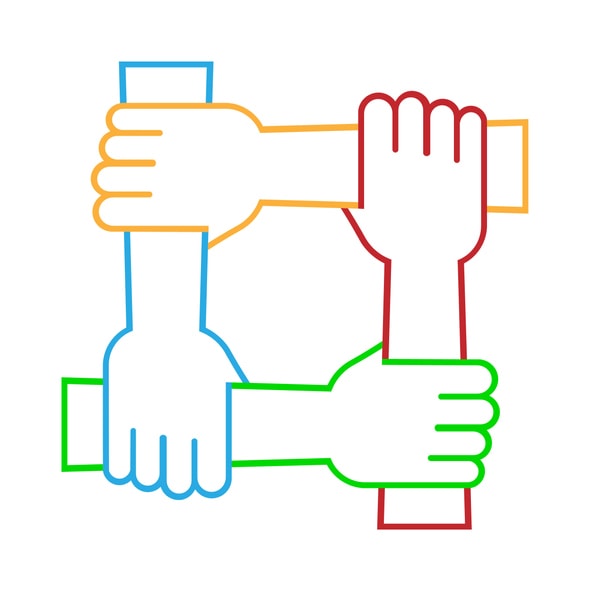Securely Deliver and Monetize—Live Event Video Streaming
More and more businesses and groups are choosing to stream live events. Video broadcasting is a great way to boost your audience, whatever your industry. Some people think live streaming will decrease in-person attendance. But in fact, the opposite is true! Studies show that around 30 percent of people who watch a live-streamed event will attend in person the following year.
That correlation is evident in other statistics as well. In 2017, Sixty-seven percent of live video viewers were more likely to buy a ticket to a concert or event after watching a live video of that event or a similar one. And that trend continues today.
This article will explore how to securely deliver and monetize live events. There are challenges inherent to live event video streaming of all types. To help get you up to speed, we’ll focus on four specific approaches to solving security challenges and effective monetization. These include: CDN delivery, multiple platform delivery, scalable platforms, and paywall monetization.
First up, let’s discuss CDN delivery for live event video streaming.
Secure live event video streaming via CDN
The term CDN stands for Content Delivery Network. A CDN is a network of servers distributed around the globe. Also, software links these servers to help distribute video content to viewers everywhere.
When you do live event video streaming, a CDN takes the video files and distributes them via these servers. Then, this technology automatically routes viewers to the closest, fastest server to their location.
Few media businesses are prepared to build the technology stack necessary for online video distribution from scratch. And that’s where a reliable CDN comes in.
However, not all CDNs offer the same advantages and reliability. Some are faster than others. Some don’t support live event video streaming at all. Also, some simply don’t have the right geographic distribution to reach your particular audience.
The Akamai advantage


Here at Dacast, we use a CDN called Akamai. Akamai is the original CDN. In fact, Akamai created the entire industry and is still the largest, fastest CDN in the business. That said, setting up a direct CDN partnership with Akamai as an individual can be expensive and confusing.
However, Dacast streaming solutions can do that work for you. Case-in-point: all Dacast users gain access to the Akamai CDN for all live streams and VODs. This way, there is no additional charge and broadcasters only manage one simple contract.
Delivering video content to multiple platforms
The next essential feature for live event video streaming is the ability to deliver content to multiple platforms simultaneously. Today, most people are watching live video from many different devices and locations. They are watching on social platforms, on websites, and beyond. They’re also watching on multiple different screens.“Fans aren’t differentiating between a TV, tablet or phone,” notes David Jurenka, the NFL’s senior vice president for digital media.
To deliver video content to multiple platforms, you have a few options. However, most of these options are slow to set up and/or have other drawbacks.
Switchboard Live
One great method to stream to multiple platforms at once is via a service called Switchboard Live. This service is a Dacast partner that makes streaming to Dacast and Facebook quick and easy.

For a small fee, Switchboard Live allows you to stream to five different platforms simultaneously. You can pay more to access additional simultaneous streams. To use Switchboard Live, you just sign up for the service and connect it with the platforms you want to stream to. YouTube, Facebook, Periscope, Twitch, Dacast, and custom RTMP platforms are all supported.
Once you’re connected, even inexperienced broadcasters can start streaming to multiple platforms quite easily. Simply set Switchboard Live as your streaming destination in your encoding software (they provide the settings). Then use the Switchboard Live dashboard to select which platforms you’re streaming to. You’re ready to go live.
As a bonus, Switchboard Live is now a Dacast partner! This makes it easy to connect your Dacast account in just a few clicks. We have a special deal with them, limited to a few customers. Don’t hesitate to contact us if you are interested.
Modern, scalable architecture
Despite what you may have heard, live streaming makes sense for events of all sizes–not just huge events. However, what about times when you expect a major audience? Is your live streaming setup scalable to support your goals?
Above, we’ve covered the importance of using a good CDN for scaleability. First, using a service like Akamai makes delivery much smoother. However, there are other elements to consider when seeking a scalable live streaming service.
Here at Dacast, we build our platform for stability and scalability. For example, our platform is built using AWS microservices. Martin Fowler describes microservices this way:
“[T]he microservice architectural style is an approach to developing a single application as a suite of small services, each running in its own process and communicating with lightweight mechanisms, often an HTTP resource API.
To start explaining the microservice style, it’s useful to compare it to the monolithic style: a monolithic application built as a single unit. [In this model,] any changes to the system involve building and deploying a new version of the server-side application […]. Monolithic applications can be successful, but increasingly people are feeling frustrations with them – especially as more applications are being deployed to the cloud.”
Microservices for scalability and innovation
With that description in mind, what are the benefits of using microservices for the end-user?
There are two major benefits we’ll highlight here: increased scalability, and better availability. As Amazon notes on its microservices benefits page,
“[Micro]services can be scaled horizontally and independently from each other. Vertical scaling, which is running the same software on bigger machines, is limited by the capacity of individual servers and can incur downtime during the scaling process. Horizontal scaling, which is adding more servers to the existing pool, is highly dynamic and doesn’t run into limitations of individual servers. The scaling process can be completely automated. Furthermore, the resiliency of the application can be improved because failing components can be easily and automatically replaced […]. Microservices architectures [also] make it easier to implement failure isolation. Techniques such as health-checking, caching, bulkheads, or circuit breakers allow you to reduce the blast radius of a failing component and to improve the overall availability of a given application.”
Paywall monetization for live event video streaming


Monetizing your live event video streaming is a major goal for businesses today. The market for online video is massive. Watching subscription-based OTT video services is a daily habit for 60 percent of adults in the US. Worldwide online video revenue was roughly $46.5 billion in 2017. That number is expected to rise to $83.4 billion by 2022.
There are three main ways to monetize your videos: advertising, subscriptions, and pay-per-view (also known as “transactional” monetization). We’ve covered video ad monetization in-depth in the past. Here, we’ll focus on subscriptions and pay-per-view, which both require a “paywall.”
Dacast’s new paywall
A paywall, as the name implies, stops a person from watching the video until they’ve made a payment. Here at Dacast, we offer a built-in paywall to all users on our Premium plan and above. Thanks to our partnership with InPlayer, this paywall offers a range of great features, including:
- Secure SSL payment processing
- Support for both subscriptions (weekly, monthly, quarterly, yearly) and pay-per-view
- Easy to track subscriber and payment information via exportable CSV database
- Support for all major credit cards, plus PayPal
- Support for 10+ of the most popular currencies; sell in a single currency or multiple currencies at once
- Multi-language interface automatically detects the viewer’s browser language setting; switch language easily via a dropdown menu
- Save and reuse common pricing schemes
This paywall is currently in beta testing. If you’d like to join the test, just contact your Dacast account exec and we’ll set you up!
Conclusion
In 2019, live event video streaming is more popular than ever before. As just one example of this, more than 4.6 million people watch music festivals via live stream each year. In short, it’s a great time to try live event video streaming if you haven’t already. However, you do need the right tools to have success with your live event video streaming.
The Dacast online video platform offers all the features we’ve discussed in this article, and much more. Our platform includes a robust RESTful API, comprehensive analytics suite, and some of the best live streaming prices on the market. And you can try it all out for free, with no commitment and no credit card. We offer a 14-day free trial so you can test out our platform. Just click the link below to start streaming today!
Do you have any questions, comments, or concerns about live streaming pricing or our broadcast streaming solutions in general? Let us know in the comments section below. We will get back to you. For exclusive offers and regular tips on live streaming, feel free to join our LinkedIn group.
Thanks for reading, and good luck with your live broadcasts!


